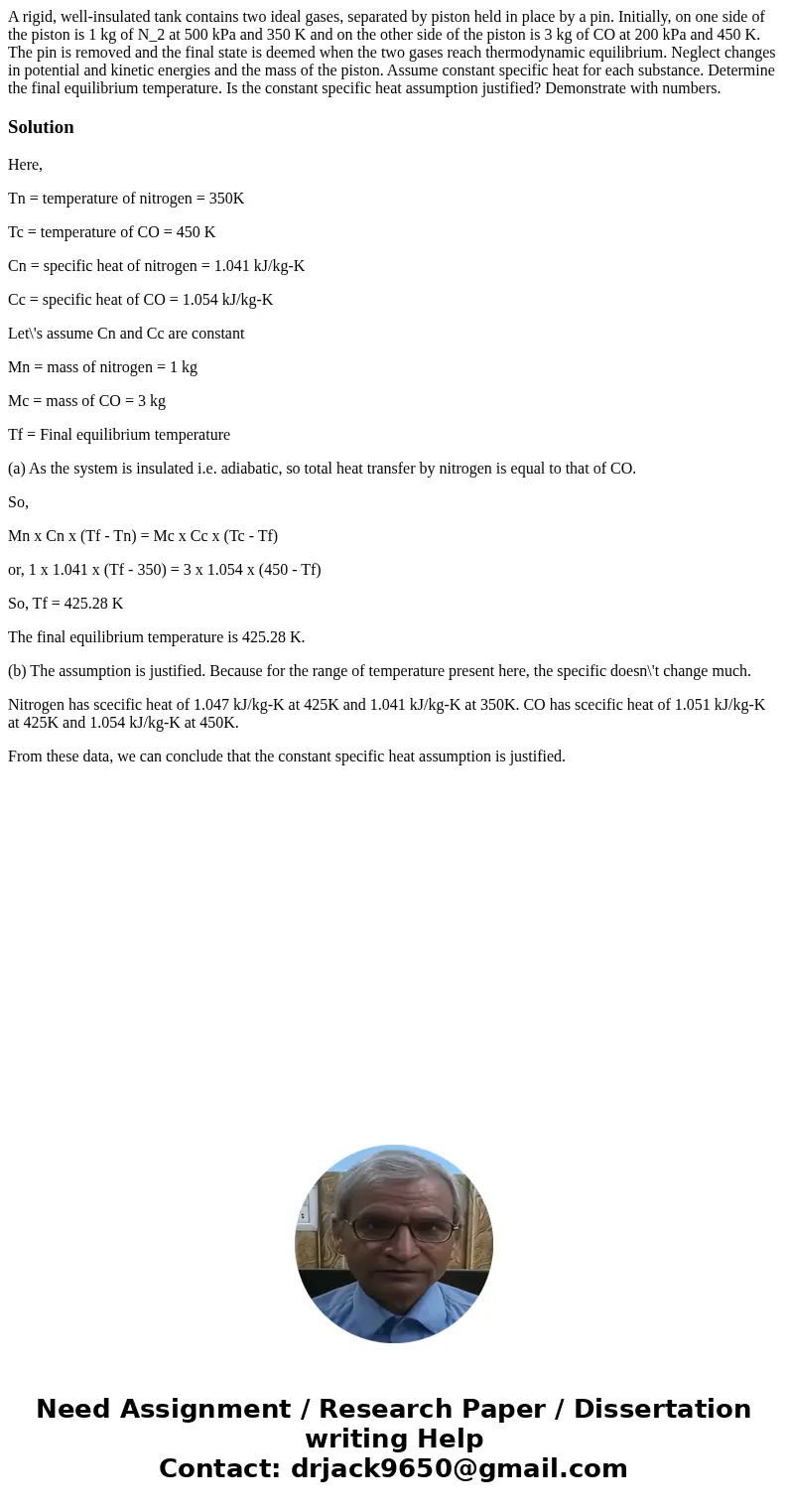A rigid wellinsulated tank contains two ideal gases separate
Solution
Here,
Tn = temperature of nitrogen = 350K
Tc = temperature of CO = 450 K
Cn = specific heat of nitrogen = 1.041 kJ/kg-K
Cc = specific heat of CO = 1.054 kJ/kg-K
Let\'s assume Cn and Cc are constant
Mn = mass of nitrogen = 1 kg
Mc = mass of CO = 3 kg
Tf = Final equilibrium temperature
(a) As the system is insulated i.e. adiabatic, so total heat transfer by nitrogen is equal to that of CO.
So,
Mn x Cn x (Tf - Tn) = Mc x Cc x (Tc - Tf)
or, 1 x 1.041 x (Tf - 350) = 3 x 1.054 x (450 - Tf)
So, Tf = 425.28 K
The final equilibrium temperature is 425.28 K.
(b) The assumption is justified. Because for the range of temperature present here, the specific doesn\'t change much.
Nitrogen has scecific heat of 1.047 kJ/kg-K at 425K and 1.041 kJ/kg-K at 350K. CO has scecific heat of 1.051 kJ/kg-K at 425K and 1.054 kJ/kg-K at 450K.
From these data, we can conclude that the constant specific heat assumption is justified.

 Homework Sourse
Homework Sourse